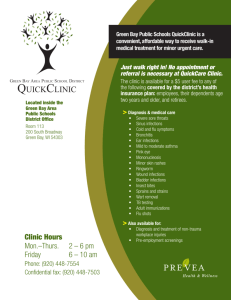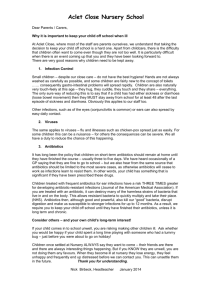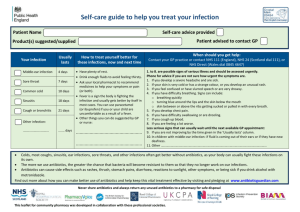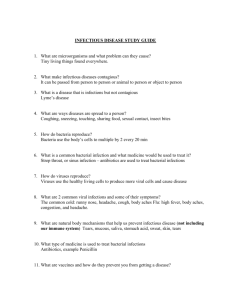Avoid Second-hand Smoke To Medicate or Not to Medicate?
advertisement
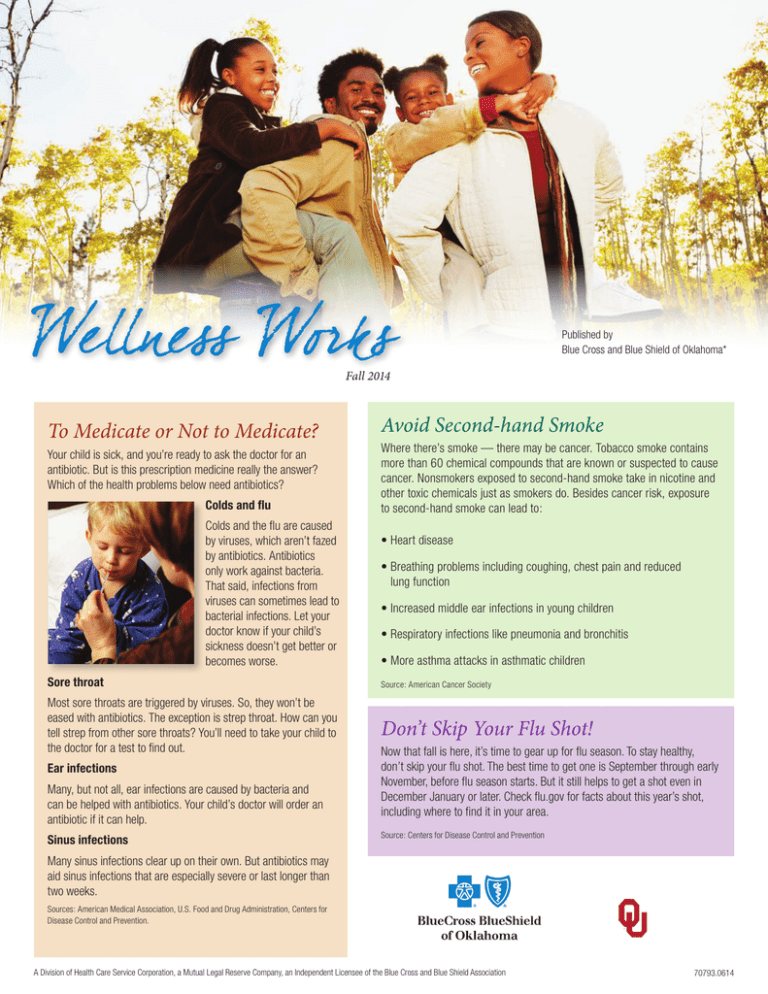
Published by Blue Cross and Blue Shield of Oklahoma* Fall 2014 To Medicate or Not to Medicate? Your child is sick, and you’re ready to ask the doctor for an antibiotic. But is this prescription medicine really the answer? Which of the health problems below need antibiotics? Colds and flu Colds and the flu are caused by viruses, which aren’t fazed by antibiotics. Antibiotics only work against bacteria. That said, infections from viruses can sometimes lead to bacterial infections. Let your doctor know if your child’s sickness doesn’t get better or becomes worse. Avoid Second-hand Smoke Where there’s smoke — there may be cancer. Tobacco smoke contains more than 60 chemical compounds that are known or suspected to cause cancer. Nonsmokers exposed to second-hand smoke take in nicotine and other toxic chemicals just as smokers do. Besides cancer risk, exposure to second-hand smoke can lead to: • Heart disease • B reathing problems including coughing, chest pain and reduced lung function • Increased middle ear infections in young children • Respiratory infections like pneumonia and bronchitis • More asthma attacks in asthmatic children Sore throat Source: American Cancer Society Most sore throats are triggered by viruses. So, they won’t be eased with antibiotics. The exception is strep throat. How can you tell strep from other sore throats? You’ll need to take your child to the doctor for a test to find out. Don’t Skip Your Flu Shot! Ear infections Many, but not all, ear infections are caused by bacteria and can be helped with antibiotics. Your child’s doctor will order an antibiotic if it can help. Sinus infections Now that fall is here, it’s time to gear up for flu season. To stay healthy, don’t skip your flu shot. The best time to get one is September through early November, before flu season starts. But it still helps to get a shot even in December January or later. Check flu.gov for facts about this year’s shot, including where to find it in your area. Source: Centers for Disease Control and Prevention Many sinus infections clear up on their own. But antibiotics may aid sinus infections that are especially severe or last longer than two weeks. Sources: American Medical Association, U.S. Food and Drug Administration, Centers for Disease Control and Prevention. A Division of Health Care Service Corporation, a Mutual Legal Reserve Company, an Independent Licensee of the Blue Cross and Blue Shield Association 70793.0614 Chose Healthy Options at Every Meal and Snack Healthy swaps • Choose low-sugar cereals or cereals where the sugar comes from dried fruit. • Serve whole-grain bread and pasta instead of white. If your kids don’t like whole-wheat bread, look for “white” whole-wheat bread. • Satisfy your kids’ sweet tooth with fruit instead of cake and cookies. Try baked apples or pears, frozen bananas or grapes, and frozen 100 percent juice pops. Consider these fast meal ideas • Blend up a smoothie. All you need is ice, milk or yogurt (fat-free or low-fat) and fruit. Bananas, berries and peaches are good fruits for smoothies. • Soups, stews and casseroles make great leftovers. Double the recipe and freeze the extras for a fast meal later that week. Fast, Healthy Foods for Busy Families • Whip up a one-pan stir-fry with lots of vegetables and a lean meat such as chicken or shrimp. Use vegetable stock or a small amount of oil for flavor. You’ll save on time because you don’t have to preheat the oven or do a lot of dishes. Your family’s schedule is jam-packed. Between shuttling the kids from sports practice to band rehearsal, some days you don’t have time to take a breath — let alone time to cook three square meals. Fortunately, making sure your children eat well doesn’t have to take a ton of time. Sources: Centers for Disease Control and Prevention, Journal of the American Medical Association The best way to help kids eat well is to serve healthy options at every meal and snack. When they fill up on nutritious foods, they’ll have less room for unhealthy choices. Children need to eat a variety of healthy foods, including: fatfree or low-fat dairy products, fruits and vegetables, lean meats, beans and eggs and whole grains. It doesn’t take any extra time to buy and serve these healthy swaps listed on the right. Changing Bad Habits: The More the Merrier? No single approach to behavior change works for everyone. Even so, recent research shows people who tackle several unhealthy behaviors at the same time may be more successful than those who seek to change one bad habit at a time. The study followed 281 people ages 45 to 64 who smoked and had high blood pressure. Group members were broken into three groups. One group worked on three goals at the same time — stopping smoking, exercising more and decreasing salt intake. One group worked on one goal at a time. One group merely received facts on the goals. After 18 months, the researchers found the group members who worked on simultaneous goals were the most likely to make and stick with positive changes. How can you put this plan into practice? Choose two or three related unhealthy habits that you feel you’re ready to tackle, such as watching too much TV, snacking too much and not exercising enough. Break each goal into small steps. Write the steps down and post them on your refrigerator or computer screen where you’ll see them each day. Keep track of your progress. At the end of the month, revisit your goals if you weren’t successful. Sources: National Institutes of Health, American Diabetes Association
